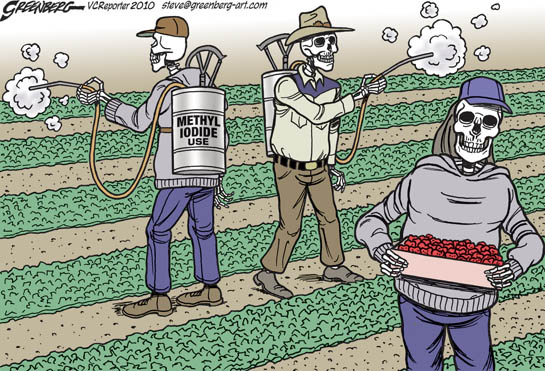Some Known Incorrect Statements About Eco Bed Bug Exterminators Dc
Table of ContentsFascination About Eco Bed Bug Exterminators DcThe Greatest Guide To Eco Bed Bug Exterminators DcNot known Facts About Eco Bed Bug Exterminators DcExcitement About Eco Bed Bug Exterminators DcThe Definitive Guide to Eco Bed Bug Exterminators Dc
Since pesticides are poisonous, they are also potentially unsafe to human beings, animals, other microorganisms, and the environment. Consequently, individuals that make use of chemicals or on a regular basis can be found in contact with them must comprehend the family member toxicity, prospective wellness impacts, and preventative actions to reduce exposure to the items they make use of. Risk, or risk, of making use of pesticides is the possibility for injury, or the degree of danger associated with using a pesticide under an offered collection of conditions.
Nonetheless, applicators can reduce or nearly remove direct exposure-- and thus minimize hazard-- by following the tag guidelines, making use of personal safety garments and devices (PPE), and managing the chemical appropriately. Even more than 95 percent of all chemical direct exposures come from dermal direct exposure, mainly to the hands and forearms. By using a set of unlined, chemical-resistant gloves, this kind of exposure can be almost removed.
The unsafe impacts that occur from a single exposure by any route of entrance are called "acute impacts." The four routes of exposure are facial (skin), breathing (lungs), oral (mouth), and the eyes. Severe poisoning is determined by analyzing the facial toxicity, inhalation toxicity, and dental toxicity of test animals.
How Eco Bed Bug Exterminators Dc can Save You Time, Stress, and Money.
Severe toxicity is determined as the amount or concentration of a toxicant-- the a.i.-- required to kill 50 percent of the pets in a test population. This measure is normally shared as the LD50 (deadly dose 50) or the LC50 (lethal focus 50). Furthermore, the LD50 and LC50 worths are based upon a solitary dosage and are taped in milligrams of chemical per kilo of body weight (mg/kg) of the examination pet or partly per million (ppm).
The lower the LD50 or LC50 worth of a pesticide product, the greater its toxicity to people and animals. Chemicals with a high LD50 are the least poisonous to human beings if utilized according to the directions on the product label. The chronic toxicity of a pesticide is determined by subjecting test pets to long-lasting direct exposure to the active ingredient.
The persistent poisoning of a pesticide is harder than severe poisoning to determine through research laboratory analysis. Products are classified on the basis of their family member severe poisoning (their LD50 or LC50 values). Pesticides that are identified as extremely harmful (Poisoning Classification I) on the basis of either oral, facial, or inhalation toxicity should have the signal words risk and poisonous substance printed in red with a head and crossbones symbol plainly showed on the front panel of the bundle label.
The severe (single dosage) dental LD50 for pesticide items in this team varies from a trace amount to 50 mg/kg. For instance, direct exposure of a few drops of a product taken orally could be deadly to a 150-pound person. Some chemical items have just the signal word risk, which tells you nothing about the severe toxicity, simply that the item can cause extreme eye damage or extreme skin irritability
Get This Report on Eco Bed Bug Exterminators Dc
In this group, the acute oral LD50 arrays from 50 to 500 mg/kg. A tsp to an ounce of this material might be fatal to a 150-pound individual (bed bug treatment). Pesticide items categorized as either a little poisonous or relatively nontoxic (Poisoning Groups III and IV) are needed to have the signal word care on the pesticide label

What Does Eco Bed Bug Exterminators Dc Mean?
All pesticide toxicity chemicalPoisoning including the Consisting of, can be found on the product's Material Safety Product Sheet InformationMSDS). Chemical labels and MSDS can be gotten from retailers or makes. Additionally, the majority of products additionally know that can be located online. The signs and symptoms of chemical poisoning can range from a mild skin irritability to coma or also death.
Because of prospective click here to find out more wellness issues, chemical customers and trainers need to identify the usual indications and symptoms of pesticide poisoning. The effects, or signs and symptoms, of pesticide poisoning can be extensively specified as either topical or systemic.
Some Known Questions About Eco Bed Bug Exterminators Dc.
Dermatitis, or inflammation of the skin, is approved as the most generally reported topical effect connected with chemical exposure. Some people often tend to cough, hiss, or sneeze when revealed to chemical sprays.
This symptom typically subsides within a few mins after an individual is gotten rid of from the direct exposure to the irritant. However, a response to a chemical product that triggers someone not just to sneeze and cough however likewise to develop severe intense respiratory system symptoms is most likely to be a real hypersensitivity or allergy.
Systemic results are rather various from topical results. They usually take place far from the initial point of call as a result of the pesticide being taken in into and distributed throughout the body. Systemic impacts often consist of nausea or vomiting, throwing up, fatigue, migraine, and digestive tract conditions. In innovative poisoning cases, the individual might experience modifications in heart price, difficulty breathing, convulsions, and coma, which can result in fatality.